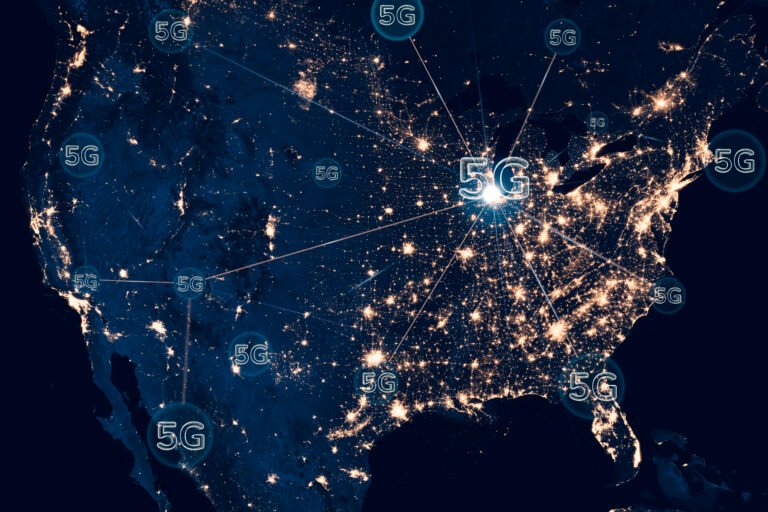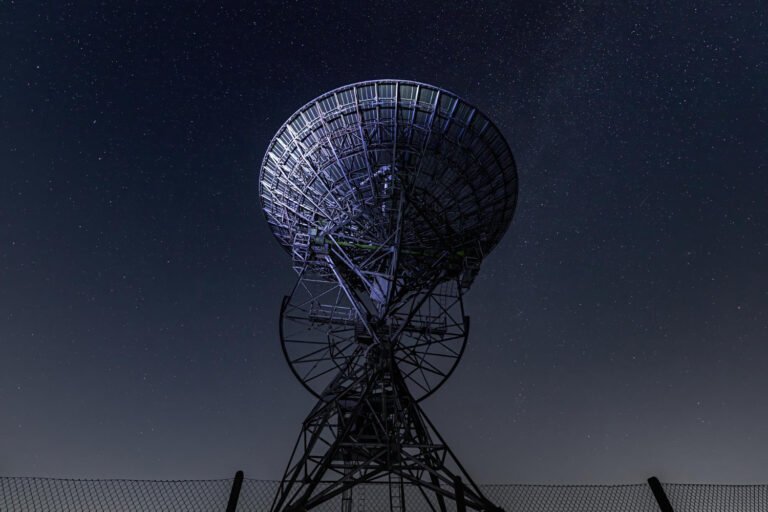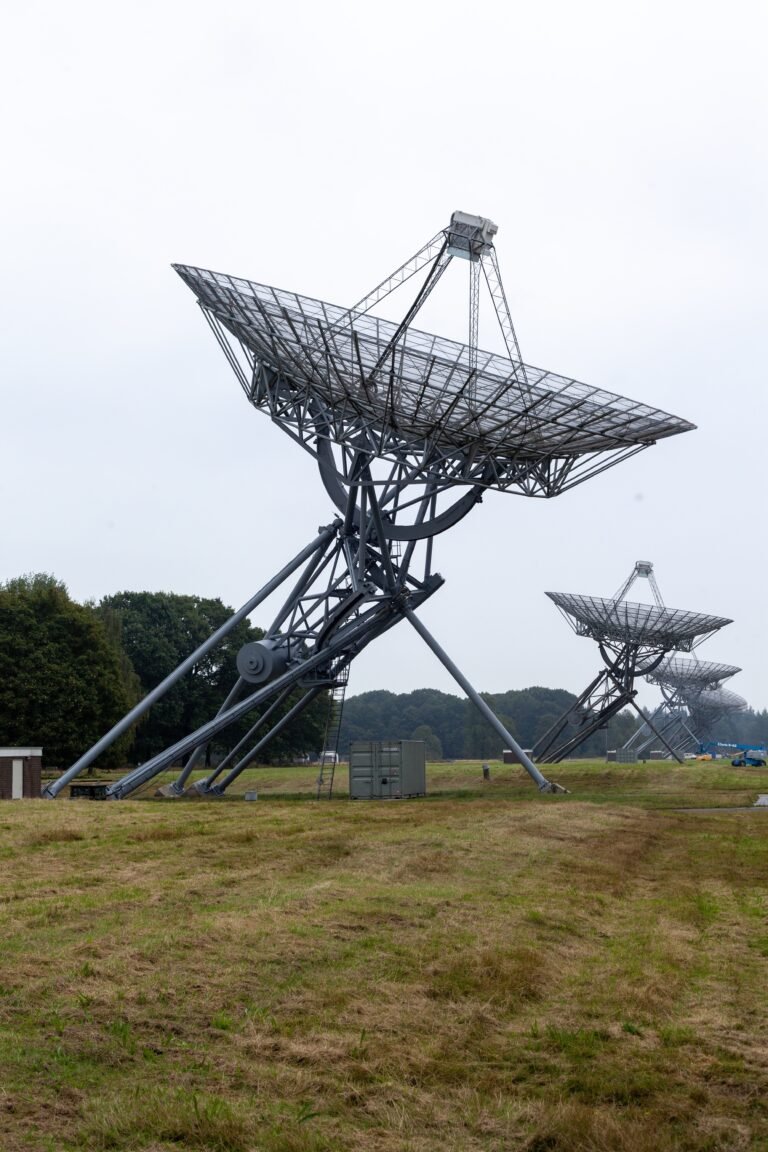Space Internet vs. 5G: 8 Key Differences You Must Understand
The race to connect everyone — everywhere, with the speed and reliability modern life demands — has two major contenders: low-Earth-orbit (LEO) Space Internet constellations (think Starlink, OneWeb, Project Kuiper) and terrestrial 5G cellular networks. Both promise faster speeds, lower latency, and new services, but they differ fundamentally in architecture, economics, performance, and ideal use cases. This article breaks down Space Internet vs 5G into eight must-know differences, explains what they mean for users and businesses, and gives practical guidance for choosing or combining these technologies.
Table of Contents
What is “Space Internet” and what is 5G? (short primer)
Space Internet refers to broadband delivered by constellations of satellites — increasingly in low Earth orbit (LEO) — that beam internet service to user terminals on the ground. Major players include SpaceX’s Starlink, OneWeb, and Amazon’s Project Kuiper; LEO systems aim to provide near-global coverage and increasingly competitive latency and throughput. Starlink
5G is the fifth generation of cellular mobile networks, designed for high speeds, ultra-low latency, and massive device density. It includes different flavors — sub-6 GHz for wide coverage, mid-band for a balance of speed and coverage, and mmWave for ultra-high throughput in dense areas. 5G is primarily terrestrial (base stations and small cells), optimized for urban and suburban markets. TDK+1
1) Coverage: global blanket vs. dense local fabric
Space Internet: LEO constellations can cover remote regions, seas, air corridors, and underserved rural areas because satellites orbit the entire planet. For people outside fiber and cellular footprints, Space Internet can be a game changer. This makes Space Internet especially valuable for maritime, aviation, rural homes, disaster response, and expeditionary use. Blue Wireless
5G: Terrestrial 5G excels where infrastructure is dense: cities, suburbs, business districts. Achieving broad 5G coverage requires installing many cell sites, small cells, and fiber backhaul. Coverage is granular — excellent in populated places but expensive and slow to expand into sparsely populated areas. TDK
Bottom line: if your priority is worldwide reach, Space Internet wins; for dense-population performance, 5G dominates.
2) Latency & speed: how fast is fast?
Space Internet: LEO satellites dramatically reduced latency compared with geostationary (GEO) satellites because they orbit much closer to Earth. Typical LEO latency is often reported in the tens of milliseconds (e.g., 30–100 ms under many conditions), and speeds have climbed into the hundreds of Mbps with ongoing improvements. That said, LEO latency and throughput still typically trail the best terrestrial 5G in ideal conditions. Penn State Extension
5G: Modern 5G — particularly mmWave and well-engineered mid-band networks — can offer sub-10 ms latency and peak speeds in the hundreds of Mbps to multi-Gbps in optimal deployments. Real-world 5G performance varies widely by spectrum and deployment but can beat LEO systems on latency and top speed in metropolitan areas. TDK
Bottom line: 5G generally gives lower latency and peak speeds in urban environments; Space Internet narrows the gap and offers competitive throughput where terrestrial networks are absent.
3) Capacity & scalability: who wins at heavy traffic?
Space Internet: Capacity is finite and grows as operators launch more satellites and upgrade gateway infrastructure. Constellations are designed to scale, but the shared orbital resources, spectrum allocation, and gateway constraints mean capacity per user may vary with demand and constellation maturity. Network architecture (beamforming, on-satellite processing) helps, but capacity scaling has costs (launches, ground stations). Keysight
5G: Designed for huge per-area capacity through dense cell deployment, carrier aggregation, and advanced radio techniques. Network operators can add spectrum or densify cells to increase capacity locally; network slicing offers logical separation of capacity for different services. For mass-market, high-density use (stadiums, downtowns), 5G is engineered to scale better per square kilometer. Blue Wireless
Bottom line: for local high-density capacity, 5G scales more naturally; for broad coverage capacity, Space Internet scales by launching satellites but at different economics.
4) Mobility & accessibility: moving users vs fixed / mobile terminals
Space Internet: Excellent for mobility across long distances — ships, planes, vehicles, and people in remote regions can maintain connections without relying on local cell towers. Many operators are improving mobile terminals (smaller, rugged, auto-tracking dishes) to support in-motion use. Blue Wireless
5G: Designed for cellular mobility within coverage areas and handoffs between cells. High-speed mobility (e.g., trains) can be well supported where coverage exists, but mobility across remote areas isn’t possible without infrastructure. 5G also enables device-level features (e.g., network slicing for IoT) that Space Internet doesn’t handle natively. TDK
Bottom line: Space Internet is better for cross-region and in-motion global connectivity; 5G is optimized for mobile connectivity inside its network footprint.
5) Infrastructure & deployment cost: rockets vs. fiber & towers
Space Internet: Building a constellation requires large upfront costs (satellite manufacturing, launches, ground gateways), but once launched, satellites cover wide areas and serve users with fewer local infrastructure requirements. Providers still need ground stations, inter-satellite links, and user terminals, and ongoing launches for replacements/upgrades. TechTarget
5G: Deployment costs are distributed: installing fiber backhaul, cell towers, small cells, and spectrum licensing. Costs scale with population density — expensive to densify urban areas but more expensive per user in rural regions. Long-term operation requires site leases, power, and maintenance. TDK
Bottom line: Space Internet concentrates cost in space & gateways; 5G spreads costs across physical infrastructure and operations on the ground.
6) Reliability, resilience & environmental factors
Space Internet: LEO satellites provide redundancy through many satellites — if one fails, others can cover. However, satellites face orbital hazards (space debris, solar weather) and require ongoing launches and operations. Ground terminal obstructions (trees, buildings) and atmospheric conditions can still affect signal quality. Keysight
5G: Ground networks can be engineered for high reliability (redundant backhaul, local caching), but are vulnerable to local power outages, fiber cuts, and physical damage. Because 5G cells are localized, natural disasters can wipe out coverage in affected areas unless resilience measures (portable cells, backup power) are in place. aethaconsulting.com
Bottom line: both have tradeoffs — Space Internet offers geographic resilience (e.g., when terrestrial networks are down), while 5G delivers robust local redundancy when infrastructure is well-engineered.
7) Security, privacy & regulatory environment
Space Internet: Satellite links traverse international space and rely on intergovernmental frequency coordination and national gateway regulations. Encryption and modern network security are used, but cross-border data routing and satellite operator policies create unique privacy and regulatory challenges (data jurisdiction, lawful intercept). Spectrum allocation and space-traffic management are also evolving regulatory areas. Keysight
5G: Heavily regulated at national levels. Operators must comply with telecom rules, lawful intercept, and local privacy laws. 5G introduces new security models (SIM/eSIM, network slicing) and a large ecosystem dependency on vendors and supply chains — which has geopolitical implications in some regions. TDK
Bottom line: both require careful regulatory navigation; enterprises must weigh data sovereignty, lawful intercept, and vendor policies when choosing Space Internet vs 5G.
8) Typical use cases & who should pick which
Space Internet is ideal for:
- Remote homes and villages with no fiber/5G.
- Ships, planes, and remote industrial operations (mining, oil & gas).
- Disaster response and military/expeditionary communications.
- Backup connectivity for businesses needing geographic redundancy. Blue Wireless
5G is ideal for:
- Urban consumers and businesses needing ultra-low latency (cloud gaming, AR/VR), high density (stadiums), or specialized enterprise slices (smart factories).
- IoT networks requiring local real-time control (autonomous vehicles in city grids).
- Fixed Wireless Access (FWA) as a fiber alternative in suburban markets where fiber is expensive to deploy. TDK
Hybrid approach: Many operators and researchers expect a blended world — 5G for dense urban performance and Space Internet for reach and resilience — often integrated to let each technology handle what it does best. Integration work (non-terrestrial networks, NTN) is an active area of research and standards. ScienceDirect
Comparative info table: Space Internet vs 5G (quick reference)
| Dimension | Space Internet (LEO) | 5G (Terrestrial) |
|---|---|---|
| Typical coverage | Global / remote-ready | Localized to deployed cells |
| Typical latency | ~30–100 ms (LEO range varies) | Can be <10 ms (mmWave/sub-6 optimized) |
| Typical speeds | Tens to a few hundred Mbps (up to Gbps in evolving systems) | Hundreds of Mbps to multi-Gbps peak |
| Best for | Rural, maritime, aviation, disaster recovery | Urban, high-density, ultra-low-latency apps |
| Deployment cost | High upfront (satellites, launches) | Distributed costs (towers, fiber, small cells) |
| Mobility | Excellent over large areas | Excellent within coverage, limited in gaps |
| Scalability | Scales with launches and gateways | Scales by densification & spectrum |
| Regulation & privacy | Cross-border routing & space regulation concerns | National telecom regulation, vendor supply chain considerations |
| (Sources: industry reports, operator updates, standards research). Starlink+2TDK |
Real-world examples & latest developments (short update)
- Starlink has grown rapidly and reports millions of subscribers and continual performance improvements; it’s been widely deployed for homes, maritime, and mobility use. Starlink
- Amazon’s Project Kuiper and OneWeb are actively launching LEO satellites and building ground infrastructure — increasing competition and capacity in the Space Internet market. Project Kuiper has seen full-scale deployments in 2025. TechTarget
- 5G deployments continue to expand mid-band and mmWave coverage, pushing real-world user speeds into the 100s of Mbps and beyond in many urban areas. Expect continuous improvements as operators add spectrum and densify networks. ZBTWIFI
Integration strategies: using Space Internet and 5G together
Practical ways to combine both:
- Primary/backup model — 5G (or fiber) as primary with Space Internet as failover for business continuity.
- Hybrid routing — route latency-sensitive traffic via 5G and heavy throughput or bulk data via Space Internet gateways when more efficient.
- Edge caching + NTN — cache critical content at edge nodes on land and use LEO backhaul to reach remote caches when needed.
- IoT aggregation — local 5G networks collect device telemetry and forward aggregated data via satellite links in remote deployments. ScienceDirect
Tips & tricks: choosing the right option (for consumers & businesses)
For consumers:
- If you live in a city with good 5G or fiber, 5G (or wired broadband) will usually deliver better latency and often higher, consistent speed.
- If you’re rural, on a boat, or need global mobility, compare Space Internet plans — watch for caps, installation needs, and whether your location is covered. Starlink
For businesses:
- For critical operations (finance, control systems) prioritize ultra-low latency and local redundancy — 5G with edge compute is often preferable.
- For remote sites or as disaster-recovery backup, set up Space Internet terminals and test failover routing regularly. Ensure SLAs with providers are well-defined. Penn State Extension
For integrators & planners:
- Model traffic flows and latency sensitivity before committing. Test real hardware in your environment; lab numbers differ from real life.
- Factor regulatory and contractual issues (data sovereignty, spectrum licensing) when designing global systems.
FAQs (6)
Q1: Is Space Internet faster than 5G?
A: It depends. In many rural or obstructed settings, Space Internet may outperform local 4G but in urban centers a well-deployed 5G mmWave or mid-band network usually offers lower latency and higher peak speeds. Real-world performance varies by operator, spectrum, and local conditions. Starlink
Q2: Can Space Internet replace 5G entirely?
A: Not realistically. Each technology is optimized for different needs. 5G excels in dense urban scenarios and ultra-low latency applications; Space Internet provides global coverage and mobility. Most forecasts expect coexistence and hybrids rather than wholesale replacement. ScienceDirect
Q3: What about cost — which is cheaper?
A: Cost comparison is nuanced. Space Internet has high upfront infrastructure costs for operators, while 5G requires dense ground infrastructure. For end users, pricing depends on providers, packages, and locality. Compare total cost of ownership (installation, subscription, redundancy) for your scenario. TechTarget
Q4: Are satellites affected by weather?
A: LEO links can be affected by severe weather, obstructions, and atmospheric factors, but modern terminals and frequency planning reduce susceptibility. Satellite systems generally have engineering mitigations, but extreme conditions can degrade performance. Keysight
Q5: How soon will satellite internet match fiber/5G performance?
A: LEO systems are closing the gap — some reports and operator claims suggest LEO speeds reaching hundreds of Mbps and even approaching gigabit class in optimal conditions. However, latency and per-area capacity improvements depend on further launches, ground upgrades, and inter-satellite networking. Integration and technology advances are ongoing. EY
Q6: Do governments regulate Space Internet differently?
A: Yes — satellites operate under international space law and require coordination for spectrum and orbital slots; ground gateways are regulated by national telecom authorities. Data routing and jurisdictional issues can make compliance more complex than domestic 5G. Keysight
Conclusion — choosing between Space Internet vs 5G
Space Internet vs 5G is not a simple “one beats the other” contest. They are complementary technologies with different strengths:
- Choose Space Internet when you need global reach, mobility, or connectivity where terrestrial networks don’t exist.
- Choose 5G where ultra-low latency, high local capacity, and dense device connectivity are essential.
- For many organizations, the right answer is both: design hybrid architectures that let 5G handle local performance needs while Space Internet provides reach and resilience.
Technology advances (LEO capacity, on-satellite processing, 5G densification, NTN standards) will continue to blur the lines. The smart strategy is to map your application’s requirements — latency, throughput,






